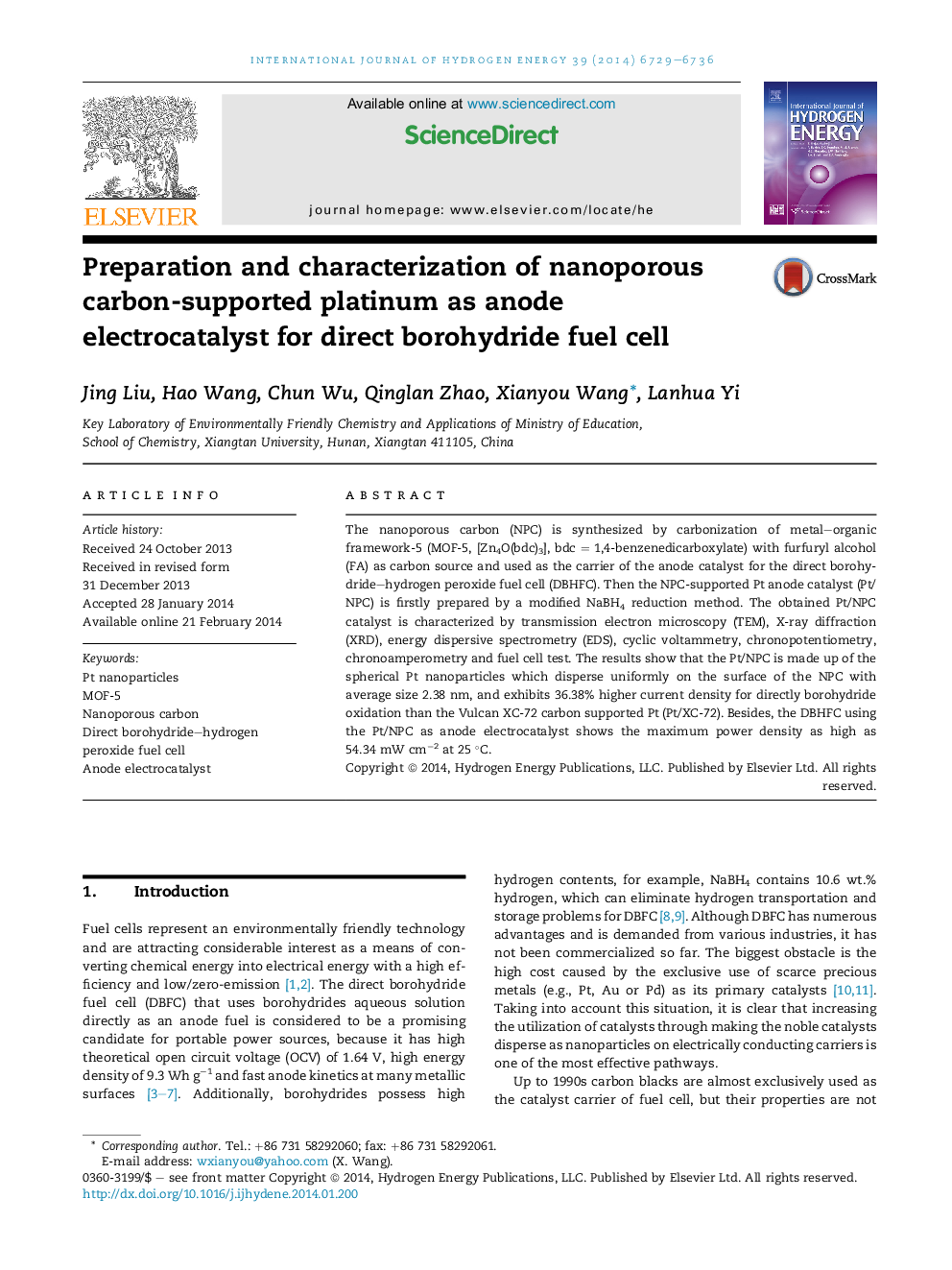| Article ID | Journal | Published Year | Pages | File Type |
|---|---|---|---|---|
| 1272865 | International Journal of Hydrogen Energy | 2014 | 8 Pages |
•The NPC was synthesized by carbonization of MOF-5 with FA as carbon source.•The NPC was firstly used as a catalyst carrier for Pt nanoparticles.•The promising Pt/NPC electrocatalyst exhibited power density of 54 mW cm−2.
The nanoporous carbon (NPC) is synthesized by carbonization of metal–organic framework-5 (MOF-5, [Zn4O(bdc)3], bdc = 1,4-benzenedicarboxylate) with furfuryl alcohol (FA) as carbon source and used as the carrier of the anode catalyst for the direct borohydride–hydrogen peroxide fuel cell (DBHFC). Then the NPC-supported Pt anode catalyst (Pt/NPC) is firstly prepared by a modified NaBH4 reduction method. The obtained Pt/NPC catalyst is characterized by transmission electron microscopy (TEM), X-ray diffraction (XRD), energy dispersive spectrometry (EDS), cyclic voltammetry, chronopotentiometry, chronoamperometry and fuel cell test. The results show that the Pt/NPC is made up of the spherical Pt nanoparticles which disperse uniformly on the surface of the NPC with average size 2.38 nm, and exhibits 36.38% higher current density for directly borohydride oxidation than the Vulcan XC-72 carbon supported Pt (Pt/XC-72). Besides, the DBHFC using the Pt/NPC as anode electrocatalyst shows the maximum power density as high as 54.34 mW cm−2 at 25 °C.
